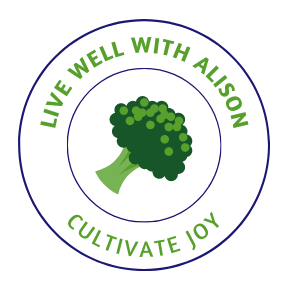aka The Down & Dirty of Clean Eating
Just in case you made a New Year’s resolution (and ignored my advice to instead take a different approach) to “eat clean” here’s the quick and dirty on “clean eating”:
What is clean eating?
One way to think of clean eating is in terms of different levels of processing of foods:
- Level 1 (More Processed):
- Ingredient list can be covered with the width of your thumb (less than an inch)
- You can pronounce all the ingredients and recognize them as foods (not chemicals)
- Level 2: 5 *real food* ingredients or less
- Level 3: Foods that are minimally processed and as close to the source as possible
- Level 4 (“Cleanest” or Least Processed): No ingredient list – the item itself is the 1 and only ingredient (think fruits, veggies, whole grains like brown rice or oats, fresh lean proteins, nuts, seeds, beans)
Example:
| Good (or sometimes just Okay) | Better | Best |
|---|---|---|
| 100% apple juice | Unsweetened, natural apple sauce | Apple |
| Kettle cooked potato chip (not ideal) | Mashed potatoes | Baked potato |
What are some benefits of clean eating?
- More gut-friendly and digestion-boosting fiber – processed, stripped down foods give you all the sugar and none of the fiber to help with blood sugar absorption and promote gut health and good digestion. The same is true for whole grains as compared to refined grains. Think brown rice versus white rice or steel-cut oats or whole, rolled oats versus quick or instant oats.
- Less sugar, salt, and saturated or trans fats – the amount of salt, sugar, and fat we add as flavorings to our food when we cook with whole, minimally processed real foods pales in comparison to the amounts added by food manufacturers to packaged, processed foods.
- More energy – from better blood sugar regulation and more crucial vitamins and minerals
- Lower risk for chronic diseases like hypertension, heart disease, and type 2 diabetes
How to get started:
- Include more fresh fruits and veggies – and other “more clean” foods rather than packaged, processed foods or snacks. Canned or frozen fruits and veggies are good too, but watch out for sauces and seasonings that have lots of ingredients including fat, sodium, or sugar.
- Look for cleaner versions of your favorite foods – maybe a granola bar you eat regularly and slowly make replacements – or better yet, make your own!
- Slowly work your way to simple, fresh, whole foods – start from Level 1 working up to Level 4.
- Don’t worry about perfection – think about the 80/20 rule. If you can work toward eating clean 80% of the time and the remaining 20% you don’t worry so much about it, you’ll be much more likely to adopt an overall cleaner way of eating that’s more sustainable.
- And remember: this is not a diet but a healthy, balanced way of eating to include more whole, “real” foods for long-term, overall health.
Check out these other Nourishment and Habit Building Resources to help guide you on your way (and I’m always available as a coaching resource as well to help you achieve your nutrition, health, and wellness goals!) to cleaner, more joyful eating and a more joyful life:
- Mindful Eating 101
- Eat Your Veggies!
- Small Changes Can Mean Lasting Results
- Keep Working on Those New Year’s Resolutions
- Eating Well – What it Means to Me
- Recipes (pardon the dust on the old content – always a work in progress!)
Want even more tips, tricks, and ideas for living well through nature, nourishment, movement and mindset? You know you do!



Great approach to simplifying healthier eating, love the ‘sometimes’ ‘better’ ‘best’ framework too – I’ll be applying that to my other habits too!
LikeLiked by 1 person
Thank you! I love the idea of applying it to other areas! Where will you start?
LikeLike
I was thinking about my running sessions, ‘sometimes’ just turning up and doing a couple of km, ‘better’ when I hit my usual distance and ‘best’ when I exceed it. Really helps with letting go of perfection!
LikeLiked by 1 person
Yes! I love that! Let me know how it goes!
LikeLike